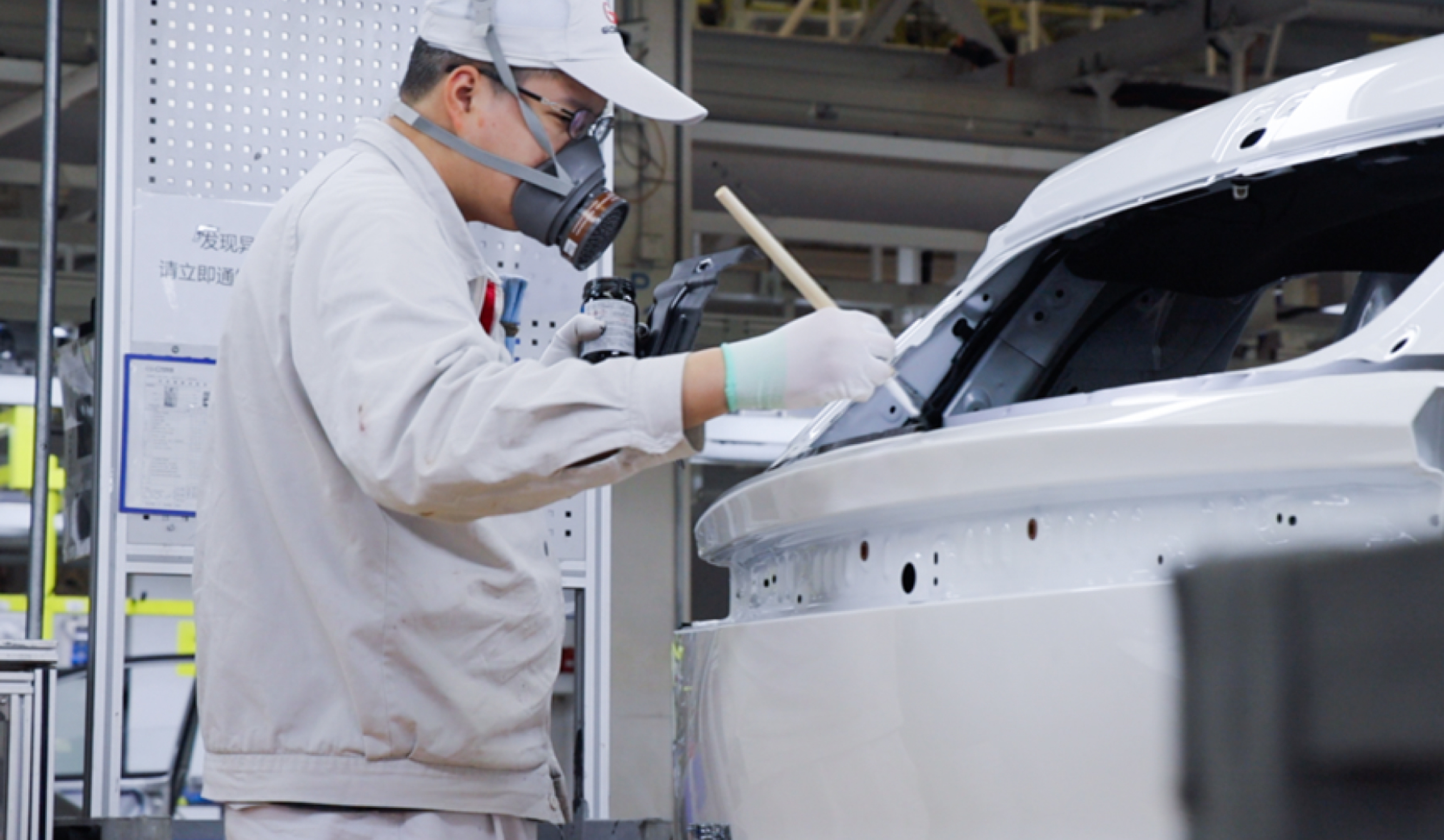What Automated Adhesive Primer Solution Really Helps with Automobile Manufacturing?
What is adhesive primer?
Adhesive primer is applied to work surfaces to maximize the bond that forms between the work surface, primer, and adhesive. The primer application process is commonly employed for pre-treating different materials such as metals, non-metals, and polymers before adhesive bonding, and it’s essential in the installation of automotive glass.
Conventional priming operations include substrate cleaning, dipping the primer, smearing, drying, etc. Most of the smearing work is done manually, while the operator will hold a brush with primer and apply it continuously and evenly on the surface of the substrate. After the primer is dried, the gluing process can be operated.

However, primers are made from volatile solvents, which are potentially harmful to human health —— operators need to wear heavy gas masks during work. Meanwhile, it's difficult for workers to ensure the trajectory's stability and consistency, which tends to affect the overall appearance. Therefore, the use of efficient automated primer solutions has become a major trend in the industry.
Challenges of adhesive primer automation: How to ensure quality in an easy and cost-effective way
In a primer automation scheme, there are three important modules: the primer feeding system, the applicator mechanism, such as a robot or specially designed equipment, and the end tool.
The solution based on the primer feeding system levels the feeding speed with that of the applicator mechanism, resulting in a long deployment time and high cost.
The solution with the robot as the main applicator mechanism is more common in the market. In a conventional solution, six-dimensional force-torque sensors or springs are added at the end of a position-controller robot to realize the application of curved surfaces. However, the normal force exerted by the robot ends on the object is not constant, when the object's surface is too curved or deformational, or the positional error of the incoming material (especially in the Z-direction) is large, the application uniformity cannot be ensured. It also takes a lot of work for re-deployment.
In terms of end tools, brushes made of felt heads are more likely used for convenient primer dipping and multi-applying. The brushes need to be replaced regularly. To achieve the ideal quality, it is particularly important to control the deformation of the felt head by controlling the downforce.
How does the Flexiv solution achieve flexibility, efficiency and easy deployment?
Flexiv’s automotive adhesive primer application employs a Rizon adaptive robot, a customized brush, a standard adhesive feeding system, a cleaning system, a gluing software package and a visual positioning/inspection module that can be selected according to requirements. There's less investment in non-standard equipment, and each module is perfectly adapted to the robotic arm, by which they can work together efficiently.

Rizon 4
Adaptive Robot

Customized Brush

Primer
Software Toolkit

Standard Glue
Supply System
Fine force control for a stable fit
Based on the industrial-grade force control capability of adaptive robots, the solution can stably follow and fit complex surfaces in real time to ensure uniform and continuous performance.

With an end force sensing accuracy of up to 0.03N and 1kHz response control frequency, the adaptive robot can control the brush head to apply a constant force to the workpiece surface, tolerating complex curvature and position errors. Therefore, situations like broken coating and trajectory NG can be avoided.
Fast deployment and intrinsically safe
Rizon is certified both by CE and ETL, and is safe enough to be deployed in a manual cooperation environment or a fully automatic production line. During deployment, engineers can directly generate trajectories by dragging and dropping teaching. With the HRI-friendly graphical programming system Flexiv Elements and the built-in primer software package, debugging can be completed quickly within a week, and the deployment of simple objects can be completed within 3 days.
Scalable and cost-effective
In view of the high frequency of changeovers and complex priming processes in the factory today, the solution can adapt to different shapes, sizes and curvatures, such as automotive triangular window glass, front and rear windshield glass, and the complete vehicle frame, etc. With a high product changeover efficiency, the solution can also be extended to other similar application processes, helping customers reduce the total cost of ownership.

According to the specific needs in different scenarios, the solution can also be equipped with a vision module based on Flexiv advanced AI technology, e.g. visual-assisted secondary positioning, real-time visual inspection...so as to better complete tasks that require higher primer quality.
In the successfully implemented car triangular window glass and windshield glass primer projects, Flexiv solution completed the test within a week, and the ROI was significantly better than customer expectations.
Adhesive primer automation is becoming an inevitable trend in the industry. With excellent flexibility and adaptivity, the full-stack robot primer solution of Flexiv can bring high yield, great quality and convenient deployment. It can solve customers' specific pain points and help promote automation transformation at the same time.

0.1N/0.03N
Force Sensing Accuracy

1kHz
Whole-body Force Control Frequency

13-16mm
Trajectory Width

300mm/s
TCP Linear Speed

Over 99%
Coverage and Accuracy Rate

3-7 Days
Deployment Duration

